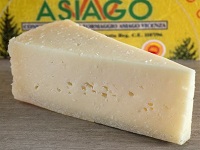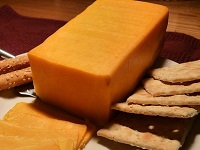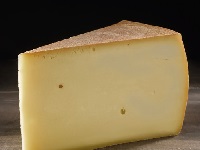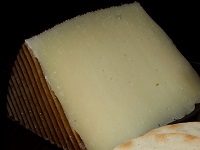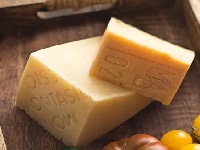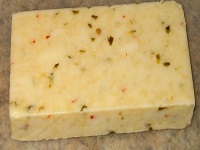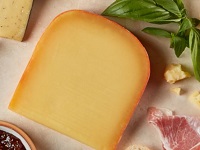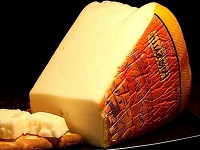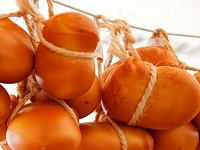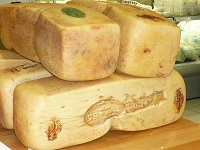Sangiovese (Italy)
Sangiovese is the main grape in many Italian wines.
It mainly grows in Toscana, Umbria, and Emilia Romagna.
Sangiovese Flavors
Primary flavors are Wild Berries, with hints of Herbs (Oregano), Flowers (Violets), Spices.
Red Cherry |
Strawberry |
Raspberry |
Cranberry |
Herbs |
Violets |
Spices |
Tea Leaves |
Flavors from Maturation and Aging
Vanilla |
Coffee |
Cinnamon |
Tobacco |
Sangiovese Profile
| SUGAR: | Dry (3 g/l) |
| BODY: | Medium |
| TANNINS: | Medium |
| FRUIT: | Medium |
| ACIDITY: | Medium - High |
| ALCOHOL: | 13%-14% ABV |
| Serving temperatures: 14-15°C (57-59°F) Riserva 16-17°C (61°/63°F) | |
Sangiovese Food Pairing
Sangiovese pairs well with both Italian and International food.
It loves Rich Pasta Dishes, Tomato Sauces, Stews and Mushroom Sauces.
Pasta |
Risotto |
Ham |
Salumi |
Pizza |
Hamburger |
Chicken |
Turkey |
Sausages |
Rabbit |
Pork |
Wild Boar |
Lamb |
Veal |
Game |
Beef |
Excellent Pairings
Grilled Vegetables.
Cured Meat. Prosciutto. Salami.
Tomato Sauce. Meat Sauce.
Truffle Sauce. Mushroom Sauce.
Rich Pasta. Rich Risotto. Pasta Cabonara.
Pasta Arrabbiata. Pasta with Truffles.
Rich Pizza. Pizza Picante. Lasagna.
Poultry. Rich Chicken. Turkey. Rabbit.
Hamburger. Sausages. Veal.
Stew. Wild Boar Stew. Ox Tail Stew.
Pork (Herb Grilled).
Lamb. Lamb Chops with Rosemary).
Red Meat. Braises. Roast Beef. Game.
Tuscan Specialities
Ribollita (Hearthy Soup).
Bistecca Fiorentina (Florentine Steak).
Risotto (with Meat or Mushroom Sauce).
Polenta with Black Truffle.
Grilled Portobello Mushrooms.
The Ideal Glass for Sangiovese
The Bordeaux Glass was designed for enjoying fuller-bodied, tannic red wines.
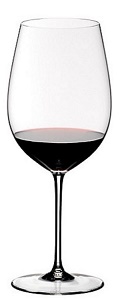
|
They are taller than other red wine glasses, and has a slimmer bowl.
The slimmer bowl directs the wine to the back of your mouth for a maximum taste. The size also allows the bouquet of the wine to develop, smooth out rough edges, play down tannins, and allow the wine to achieve balance. |
Sangiovese Cheese Pairing
If You Like Sangiovese
You Might Also Like:
About Sangiovese
Sangiovese homeland is Tuscany and Romagna region in Central Italy. But you can find it also in Umbria, Marche, Lazio, Campania and Sicily because it is the most cultivated red italian grape.
The name (Sanguis Jovis) is Latin for "the Blood of Jupiter".
Sangiovese is thin-skinned and the color of the wine is light red.
It ripens relatively late.
Sangiovese wine has high acidity, high tannins, medium body and medium alcohol.
Sangiovese DNA
Grape geneticist dr. José Vouillamoz at Edmund Mach Foundation in Italy, discovered that ancestors of Sangiovese are most likely the Tuscan grape Ciliegiolo and southern Italian grape Calabrese Montenuovo.
At present there are 89 approved clones of Sangiovese in Italy, but the most known are: Sangiovese Grosso (grosso=big) used for making Brunello di Montalcino and Sangiovese Piccolo (piccolo=small).
Variety mutations results in very different tasting wines. The most popular are:
- Chianti
- Brunello di Montalcino
- Nobile di Montepulciano
- Super Tuscan (Sassicaia, Tignanello)
- Morellino di Scansano
Primary grape aromas: sour red cherry, wild cherry, violet, tomato and plum.
About Sangiovese
Sangiovese is the most cultivated red grape in Italy where it is planted from North to South, but it is best expressed is in the region of Toscana.
Sangiovese is thin-skinned. The name translates to Blood of Jupiter". The color of the wine is light red.
Sangiovese wine has high acidity, smooth tannins, medium body and medium alcohol.
Red Cherries and Wild Berries are typical Sangiovese flavors, with hints of Flowers (Violets), Licorice, Spices, Tea, and Minerals. With aging, Darker Berries, Sweeter Cherry, Plum, and more Herbal flavors are developed.
